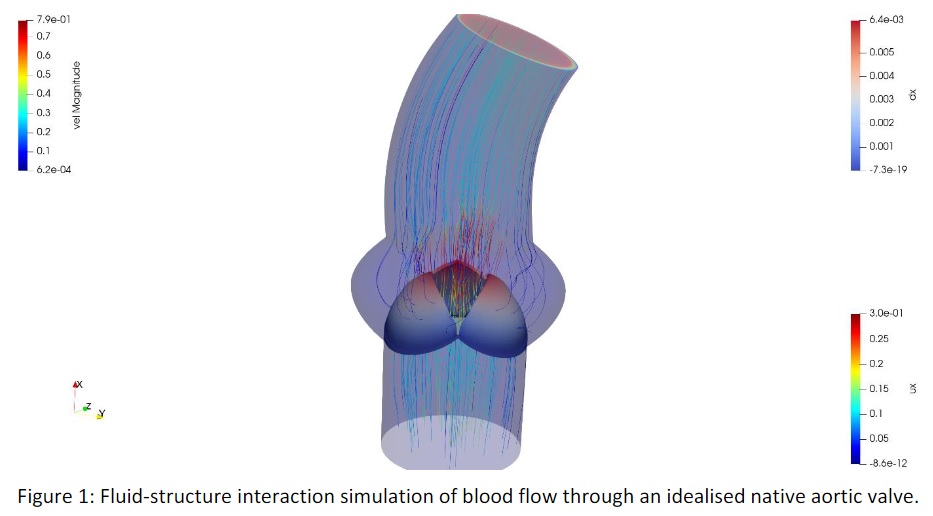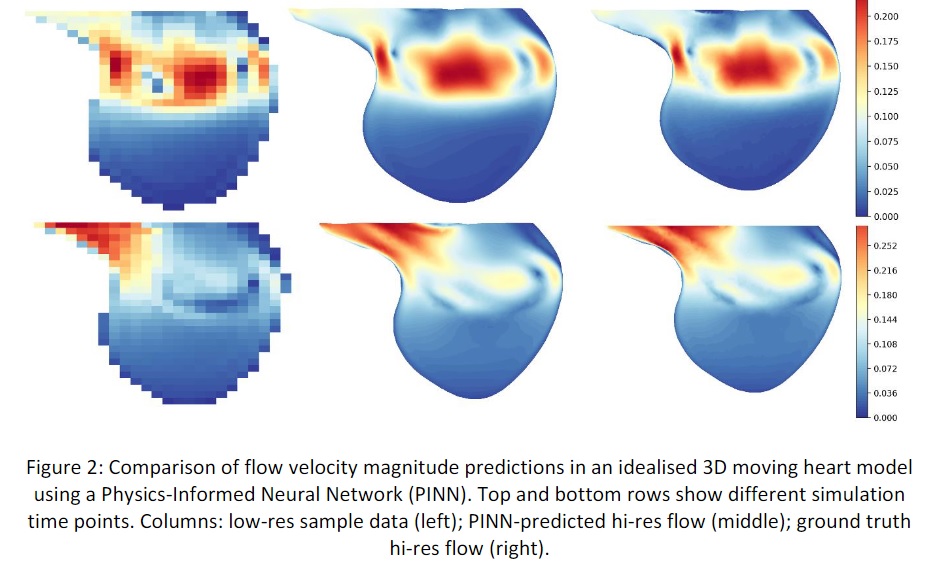Rapid haemodynamic analysis of native and prosthetic heart valves using physics-informed machine learning
- Academic lead
- Zeike Taylor, Mech Eng
- Co-supervisor(s)
- Alex Frangi, Computing, Nishant Ravikumar, Computing, Toni Lassila, Computing
- Project themes
- Biomedical Flows
The project aims to create rapid and scalable deep learning-based simulation techniques for fluid-structure interaction analysis of native and prosthetic aortic valves. Such tools can enable prediction of the haemodynamic behaviour before and after implants, which is governed by complex interaction of the blood flow and valves themselves. FSI analyses, such as in Fig 1, are notoriously expensive and may be prone to convergence difficulties. These are serious problems for applications like in-silico trials, which require scaling up to simulation of very large cohorts of virtual patients. We hypothesise that new simulation techniques based on deep learning, and specifically physics-informed deep learning (Fig 2), can ameliorate these issues, even for complex modelling problems like FSI. The project will build on complementary work in our group on deep learning approaches for fluid and solid problems. High-level objectives for the project include:
1) Formulating and training an effective FSI modelling approach based on physics-informed deep learning.
2) Demonstrating effectiveness of this approach in computing native and prosthetic valve haemodynamic performance within real patient anatomies.
3) Demonstrating scalability of the approach in the context of an in-silico trial of an existing transcatheter aortic valve device.


